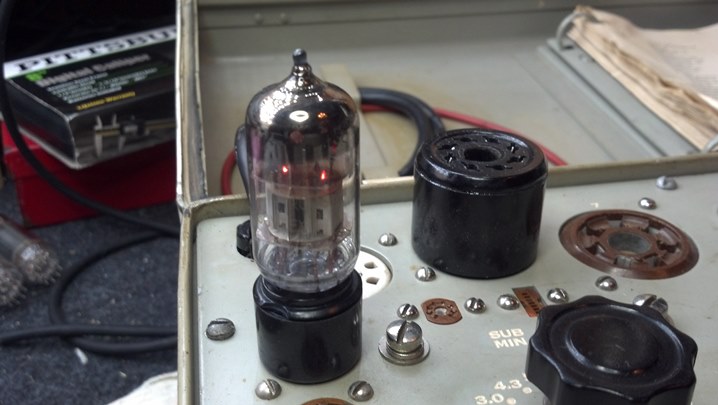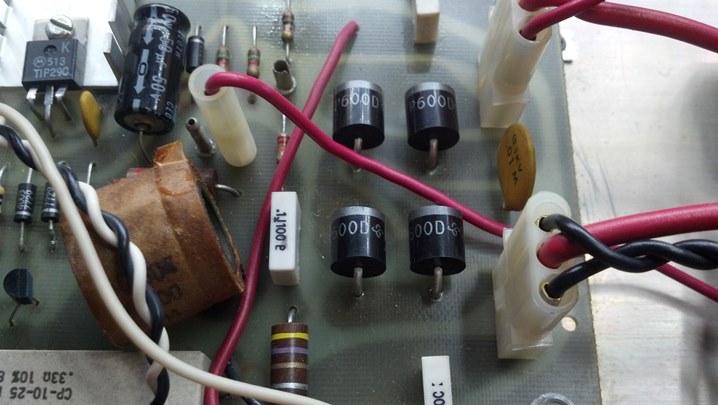Robin had another of these wonderful Crate combo amps for servicing. The Unbrokenstring Crew knew just what to do!
 Robin’s 50 watt combo was serviced earlier, in this blog post: https://www.unbrokenstring.com/crate-vintage-club-50-amp-repair/
Robin’s 50 watt combo was serviced earlier, in this blog post: https://www.unbrokenstring.com/crate-vintage-club-50-amp-repair/
 This is a 30 watt unit, with very similar construction. Look at all that St. Louis Music goodness!
This is a 30 watt unit, with very similar construction. Look at all that St. Louis Music goodness!
 The loudspeaker is 100% and made in U.S.A.
The loudspeaker is 100% and made in U.S.A.
 This pic just documents where the wires go.
This pic just documents where the wires go.
 These wires go to the reverb tank. They are marked with a magic marker so that they can be correctly re-installed.
These wires go to the reverb tank. They are marked with a magic marker so that they can be correctly re-installed.
 The tubes need to come out as we are removing the printed circuit board from the chassis.
The tubes need to come out as we are removing the printed circuit board from the chassis.
 These numbers correspond to the tube numbers on the schematic.
These numbers correspond to the tube numbers on the schematic.
 While we’re here, we’ll make a check of the condition of each of the tubes.
While we’re here, we’ll make a check of the condition of each of the tubes.
 Restoring the washer stack is essential to keep the strains on the printed circuit board to a minimum when reassembled.
Restoring the washer stack is essential to keep the strains on the printed circuit board to a minimum when reassembled.
 So we are now able to remove the main circuit board.
So we are now able to remove the main circuit board.
 As we did with the 50 watt unit, we are taking this opportunity to clean up the front panel.
As we did with the 50 watt unit, we are taking this opportunity to clean up the front panel.
 Sure enough, the capacitors have reached End Of Life.
Sure enough, the capacitors have reached End Of Life.
 This circuit board is now recapped! Pretty!
This circuit board is now recapped! Pretty!
 After reassembly, this quick check shows us that we can drive 30 watts continuously into eight ohms with no problem!
After reassembly, this quick check shows us that we can drive 30 watts continuously into eight ohms with no problem!
 This unit has an easy bias setting arrangement. Here, we’re using the 4 1/2 digit Fluke meter to measure current. The AC power is supplied by the Variac on the shelf.
This unit has an easy bias setting arrangement. Here, we’re using the 4 1/2 digit Fluke meter to measure current. The AC power is supplied by the Variac on the shelf.
 Some of the cabinet screws were cross-threaded at one time in the past. So, we can chase them with a die.
Some of the cabinet screws were cross-threaded at one time in the past. So, we can chase them with a die.
 The captive nuts are cleaned up with a matching tap. We’re good for Final Assembly!
The captive nuts are cleaned up with a matching tap. We’re good for Final Assembly!
 Another fine combo amp is ready for the next million miles!
Another fine combo amp is ready for the next million miles!
Thanks for reading all the way to the end!
CONTACT – David Latchaw EE
281-636-8626





























































